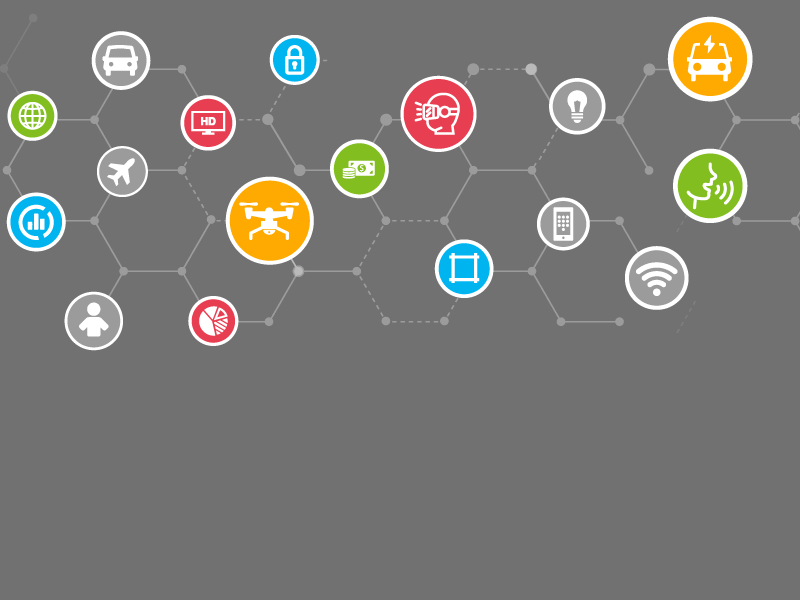How do you define edge computing?
I’ve asked a lot of people that question, and it probably won’t come as a surprise that edge computing is defined differently depending on your industry, your world region, your role in technology and other factors. And the definitions provided are often so broad as to be meaningless from a technology perspective.
What everyone does seem to agree on, however, is that edge computing is growing fast, and network architectures must adapt to support this growth. Cisco predicts there will be more than 23 billion connected devices in just three years. This is in line with predictions from leading analysts: by 2020, Gartner projects 20.8 billion connected devices, IDC 28.1 billion and IHS Markit 30.7 billion.
In many cases, supporting the applications enabled by these connected devices will force a fundamental shift from the current core-to-edge focus to a future state of an edge-to-core network architecture. As our industry wrestles with the implications of this development, the lack of clarity associated with edge computing risks becoming a detriment.
Consider the comparison with a similarly broad term: cloud computing. When IT managers make decisions about where their workloads will reside, they need to be more precise than “in the cloud.” They need to decide whether they will use an on-premises private cloud, hosted private cloud, infrastructure-as-a-service, platform-as-a-service or software-as-a-service.
The clarity that has evolved around cloud computing does more than facilitate communication; it facilitates decision making.
Is the same possible for edge computing? That’s the question my team here at Vertiv sought to answer. Working with an independent, third-party research group we conducted an extensive audit of the various edge use cases that exist today and will likely emerge in the next several years.
We identified more than 100 cases during our initial analysis. Then, we honed that list down to the 24 that will have the greatest growth, criticality or financial impact for a more in-depth analysis.
These use cases ranged from content distribution to autonomous vehicles to augmented reality. Were these totally distinct applications, or were there common characteristics that would allow them to be classified in a way that would be meaningful to an IT decision maker?
Answering that question involved analyzing the performance requirements of each use case in terms of latency, bandwidth, availability, and security. We also evaluated the need to integrate with existing or legacy applications and other data sources and the number of potential locations required to support the use case.
What emerged from this analysis was the realization that there was a unifying factor that the 24 use cases could be organized around. That unifying factor was the data characteristics of the various use cases.
Edge applications, by their nature, have a data-centric set of workload requirements. This data-centric approach, filtered through requirements for availability, security and the nature of the application, proved to be central to understanding and categorizing the various use cases.
This led to our recognition of four archetypes that we believe encompass the majority of edge uses cases and can help guide decisions regarding the infrastructure required to support edge applications. These four archetypes are:
- Data Intensive, which encompasses use cases where the amount of data is so large that layers of storage and computing are required between the endpoint and the cloud to reduce bandwidth costs or latency.
- Human-Latency Sensitive, which includes applications where latency negatively impacts the experience of humans using a technology or service.
- Machine-to-Machine Latency Sensitive, which is similar to the Human-Latency Sensitive archetype except for the tolerance for latency in machines is even less than it is for humans because of the speed at which machines process data.
- Life Critical, which are applications that impact human health or safety and so have very low latency and very high availability requirements.
We believe these four archetypes represent an important first step in defining the infrastructure needed to support the future of edge computing. As part of that mission, we’ve published a report, Four Edge Archetypes and their Technology Requirements, that provides a more detailed analysis of the archetypes and their broad technology requirements.
The early feedback we’ve received has been promising. When we presented the report findings to industry analysts Lucas Beran from IHS Markit, he said, "The Vertiv archetype classification for the edge is critical. This will help the industry define edge applications by characteristics and challenges and move toward identifying common infrastructure solutions."
We are now building on this initial phase of the research, working with customers, analysts and industry partners to define the specific technology requirements of each archetype to accelerate and simplify the task of supporting edge applications. Ultimately, we think this research will lead to the development of infrastructure solutions that will meet the challenges of unique archetypes and their use cases.
Edge computing has the potential to reshape the network architectures we’ve lived with for the last twenty years. We need to work together to ensure that process happens as efficiently and intelligently as possible. I encourage you to share your thoughts or questions on the applicability of these archetypes to your business with your Vertiv representative.







